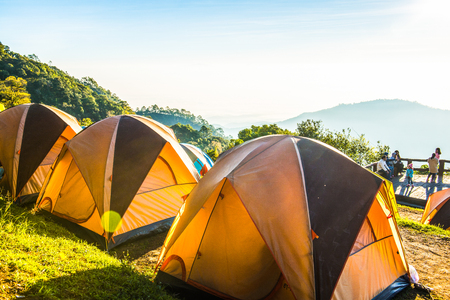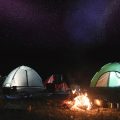Introduction to Prepper Culture in the U.S.
Prepper culture in the United States has grown from a fringe movement into a more mainstream lifestyle, especially in recent decades. At its core, prepping is about being ready for emergencies—whether thats a natural disaster, economic collapse, or other large-scale disruptions. But to understand how survivalist camping fits into this world, its important to first explore where prepper culture came from and why it continues to evolve.
Historical Roots of American Prepping
The roots of American prepping can be traced back to the Cold War era when fears of nuclear war led many families to build bomb shelters and stockpile food and water. The idea was simple: if society collapses, you should be able to survive on your own. Over time, these ideas took hold in different ways—from Y2K fears in the late 1990s to the rise of reality TV shows like Doomsday Preppers in the 2010s.
Timeline of Key Events Influencing Prepper Culture
| Year/Period | Event | Impact on Prepper Culture |
|---|---|---|
| 1950s–1960s | Cold War tensions | Nuclear fears led to home fallout shelters and food storage practices. |
| 1999 | Y2K scare | Sparked renewed interest in self-sufficiency and emergency preparedness. |
| 2001 | 9/11 attacks | Increased concerns about terrorism and infrastructure vulnerability. |
| 2008 | Financial crisis | Brought economic instability to the forefront, motivating people to prepare for job loss or market collapse. |
| 2020 | COVID-19 pandemic | Panic buying and supply chain issues made prepping feel essential even to non-preppers. |
The Motivations Behind Prepping
The reasons people become preppers vary widely. Some are motivated by political beliefs or distrust in government systems. Others simply want peace of mind knowing they can take care of their families during hard times. Common motivations include:
- Self-Reliance: Wanting to depend less on public systems like electricity, water, or grocery stores.
- Security: Being prepared for civil unrest, crime spikes, or personal safety threats.
- Sustainability: Living off-grid or reducing dependence on modern conveniences.
- Evolving Risks: Responding to climate change, cyberattacks, pandemics, or extreme weather events.
Evolving Public Perception of Preppers
The image of preppers has shifted over time. In earlier years, they were often seen as conspiracy theorists or doomsday fanatics. However, recent events have normalized many prepping behaviors. Today, having emergency supplies or knowing how to purify water isnt just for “extreme” preppers—it’s considered smart planning by many Americans.
Mainstream vs Traditional Prepper Approaches
| Aspect | Traditional Preppers | Modern/Mainstream Preppers |
|---|---|---|
| Mindset | Long-term survival after major collapse | Preparedness for short- to mid-term disruptions |
| Gear Focus | Heavy-duty tools, bunkers, ammo stockpiles | Bug-out bags, solar chargers, first-aid kits |
| Lifestyle Integration | Often off-grid or homesteading-based | Urban/suburban with occasional survivalist outings like camping trips |
| Public Perception | Viewed as fringe or eccentric | Increasingly accepted and respected post-COVID-19 and natural disasters |
This shift helps explain why survivalist camping—a hands-on way to practice skills like fire-making, shelter building, and food sourcing—has become a popular activity not just among hardcore preppers but also among everyday Americans looking to be more self-sufficient and prepared for anything life throws at them.
2. What is Survivalist Camping?
Survivalist camping is a type of outdoor experience that goes far beyond your typical weekend getaway in the woods. Unlike traditional camping, which often includes packed coolers, cozy tents, and maybe even a portable speaker for music, survivalist camping strips everything down to the essentials. Its all about self-reliance, minimal gear, and sharpening wilderness survival skills.
How Survivalist Camping Differs from Traditional Camping
The core idea behind survivalist camping is to prepare for worst-case scenarios—natural disasters, grid failures, or social unrest—by practicing how to live off the land with limited resources. This practice aligns closely with American prepper culture, where being ready for anything is a way of life.
| Feature | Traditional Camping | Survivalist Camping |
|---|---|---|
| Purpose | Recreation and relaxation | Preparedness and skill-building |
| Gear Used | Tents, stoves, coolers, chairs | Minimal gear like tarps, fire starters, knives |
| Shelter | Store-bought tents or campers | Bushcraft shelters built on-site |
| Food Preparation | Brought from home or bought pre-packaged | Foraged food, fishing, hunting, or MREs (Meals Ready to Eat) |
| Water Source | Bottled water or campground supply | Purified from natural sources like streams or rainwater |
| Skills Required | Basic outdoor know-how | Advanced survival skills: navigation, first aid, fire-making without matches |
| Cultural Connection | Mainstream outdoor recreation culture | Tied into prepper and self-sufficiency movements in America |
The Role of Self-Reliance in Survivalist Camping
At its heart, survivalist camping promotes independence. Campers rely on their own knowledge and resourcefulness instead of modern conveniences. This means knowing how to start a fire with flint and steel, building a shelter from branches and leaves, purifying water using basic tools, and identifying edible plants in the wild.
Essential Skills Every Survivalist Camper Practices:
- Shelter Building: Knowing how to construct a protective structure using natural materials.
- Fire Starting: Using techniques like bow drills or ferro rods when lighters aren’t available.
- Water Purification: Boiling water or using purification tablets/filters.
- Navigation: Reading maps and using compasses instead of GPS devices.
- Knot Tying: Useful for building shelters or securing gear.
- First Aid: Treating wounds or injuries in remote areas without immediate help.
- Food Sourcing: Fishing, trapping small game, or foraging safely.
A Lifestyle Choice Rooted in Prepper Values
For many Americans involved in prepper culture, survivalist camping isnt just a hobby—its part of a larger lifestyle choice focused on resilience and readiness. Practicing these camping methods helps individuals feel more secure about their ability to face emergencies head-on. Its not about fear; its about empowerment through preparation. Whether its a power outage that lasts days or an unexpected event requiring evacuation into the wilderness, survivalist campers aim to be ready for anything.
This form of camping reflects broader themes in American prepper culture: distrust of overreliance on systems, value in individual capability, and a strong connection to nature as both provider and challenge. For preppers across the U.S., survivalist camping is both training ground and testing ground—a way to stay sharp and build confidence before they ever need to use those skills in real life.
![]()
3. Skills and Mindsets in Survivalist Camping
Survivalist camping is more than just pitching a tent in the woods—its about preparing for the unexpected with a set of practical skills and the right mental attitude. In American prepper culture, mastering survival skills is considered essential for self-reliance during emergencies, whether its a natural disaster, power outage, or societal breakdown.
Key Survival Skills Every Prepper Practices
The core of survivalist camping involves learning hands-on techniques that can keep you alive and comfortable when modern conveniences are unavailable. Here are some of the most important skills:
Essential Survival Skills Table
| Skill | Description | Why It Matters |
|---|---|---|
| Fire-starting | Using tools like flint, steel, or waterproof matches to create fire. | Fire provides warmth, allows cooking, and signals for help. |
| Water Purification | Filtering or boiling water from natural sources to make it safe to drink. | Safe drinking water is vital to prevent dehydration and illness. |
| Foraging | Identifying and gathering edible plants, berries, and mushrooms in the wild. | This helps supplement food supplies when canned goods run out. |
| Shelter-building | Constructing protective structures using tarps, branches, or natural materials. | A reliable shelter guards against weather elements and wildlife. |
The Importance of Mental Preparedness
While physical skills are critical, survivalist camping also trains your mindset. Preppers emphasize staying calm under pressure, thinking creatively with limited resources, and adapting quickly to changing situations. These psychological traits can make a huge difference when facing real-life emergencies.
Mindset Traits of a Successful Survivalist
- Self-reliance: Trusting your abilities instead of depending on outside help.
- Resilience: Bouncing back from setbacks without losing focus or hope.
- Situational awareness: Staying alert to your surroundings and potential dangers.
- Problem-solving: Thinking on your feet when gear fails or plans change.
Cultivating Confidence Through Practice
The more time preppers spend in survivalist camping scenarios, the more confident they become. Repetition builds muscle memory for tasks like starting fires or setting up shelters, while regular exposure to outdoor challenges sharpens their decision-making skills. Over time, these experiences help create a lifestyle centered around preparedness rather than fear.
This section highlights how American preppers use survivalist camping not only to build essential outdoor skills but also to strengthen their mental toughness—both key ingredients in their commitment to living ready for anything.
4. The Connection Between Survivalist Camping and Preparedness
In American prepper culture, survivalist camping is more than just a weekend hobby—its a key part of how preppers train and live out their beliefs. By heading into the wild with limited gear and resources, preppers use survivalist camping as both a hands-on learning experience and a way to stay mentally and physically ready for any emergency situation.
Survivalist Camping as a Training Ground
One of the biggest reasons preppers embrace survivalist camping is because it offers real-world practice. Unlike reading a book or watching a video, camping in survival conditions forces you to apply skills like fire-starting, shelter-building, and water purification in an unpredictable environment. This kind of experience builds confidence and helps identify what works—and what doesn’t—before an actual crisis hits.
Key Skills Practiced During Survivalist Camping
| Skill | Why It Matters |
|---|---|
| Fire Starting | Essential for warmth, cooking, and safety |
| Shelter Building | Protects against weather and exposure |
| Water Purification | Prevents illness from unsafe drinking water |
| Navigation Without GPS | Keeps you on track if digital tools fail |
| Food Foraging & Hunting | Covers nutrition when supplies run low |
A Lifestyle That Reflects Prepper Values
Survivalist camping isn’t just about practicing skills; it also reflects the deeper values many American preppers hold. These include self-reliance, independence, resilience, and living simply. When youre out in nature relying only on what you’ve brought or can find, it reinforces the mindset that being prepared means depending less on modern systems that could fail at any time.
The Everyday Impact of Survivalist Camping on Preppers
This type of camping often influences how preppers live day-to-day. Many start growing their own food, storing emergency supplies, or even designing their homes with off-grid capabilities based on what theyve learned in the wilderness.
How Survivalist Camping Shapes Daily Prepper Habits
| Camping Experience | Daily Life Application |
|---|---|
| Losing access to clean water during camping trips | Installing home water filtration systems and storing bottled water |
| Navigating without electronics in the wild | Keeping paper maps and compasses in go-bags at home |
| Cooking over open fire while camping | Learning to cook without electricity at home using propane or solar ovens |
Through survivalist camping, preppers not only develop practical skills but also strengthen their commitment to a lifestyle built around preparedness. It becomes both a method of training and a way of life that prepares them for whatever the future may bring.
5. Cultural Influence and Media Representation
Survivalist camping has become more than just a practical skill set for preppers—its a cultural symbol, especially in the United States. Over the years, American media has played a huge role in shaping how both survivalist campers and the broader prepper community are seen by the public. From reality TV shows to blockbuster movies, these portrayals influence not only public opinion but also how people engage with the prepper lifestyle.
How Preppers Are Shown in Media
In American pop culture, preppers are often shown in extreme ways. Sometimes they’re depicted as paranoid or overly cautious individuals preparing for doomsday scenarios. Other times, they’re portrayed as rugged, self-reliant heroes who can live off the grid and survive anything. These contrasting images affect how seriously people take the prepper movement.
Common Media Representations of Preppers
| Type of Media | Example | Portrayal |
|---|---|---|
| Reality TV | Doomsday Preppers | Dramatic and sometimes exaggerated prepping behaviors |
| Movies | The Road, I Am Legend | Lone survivors using survival skills to navigate post-apocalyptic worlds |
| YouTube & Podcasts | The Urban Prepper, Sensible Prepper | Educational, realistic tips on gear and preparedness |
The Impact on Public Opinion
The way survivalist camping is shown in media directly affects how people think about it. For some, these portrayals spark curiosity and inspire them to learn outdoor skills or prepare emergency kits. For others, especially when media leans into fear-based content, it may cause skepticism or even ridicule toward the prepper community.
Main Effects of Media on Public Perception
- Stereotyping: Some people view all preppers as conspiracy theorists because of extreme portrayals.
- Awareness: More Americans are aware of emergency preparedness thanks to popular shows and influencers.
- Mainstream Appeal: Survivalist camping is now seen by many as a useful hobby rather than just a fringe activity.
The Role of Pop Culture in Shaping the Movement
The growing popularity of survivalist themes in pop culture has helped normalize prepping and camping as part of everyday life. Shows like “Alone” or “Man vs. Wild” highlight real skills that anyone can learn, while social media platforms give everyday preppers a space to share advice and build communities. As more people connect through shared interests in gear reviews, bug-out bags, or backcountry cooking, survivalist camping continues to evolve beyond its original roots.
The Takeaway
Cultural representation matters. Whether its accurate or dramatized, media coverage influences how people view prepping and survivalist camping in America. As more balanced and educational content becomes available, the image of preppers is gradually shifting—from fringe outsiders to practical thinkers focused on self-reliance and resilience.


